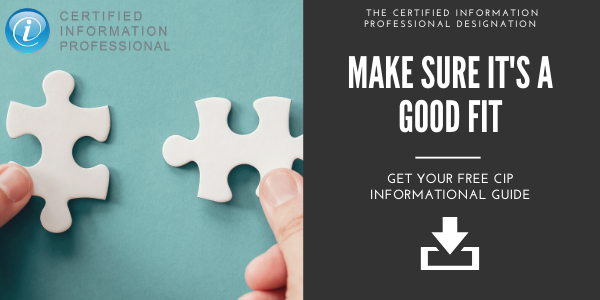
How to Dominate the Domains of the CIP - Domain 1: Creating and Capturing Information
Certified Information Professional (CIP)
Hopefully, you've heard by now that we've updated the Certified Information Professional (CIP) exam. If so, you’re probably wondering:
- What's new?
- What's changed?
- What do you need to know to be successful?
These are important questions, so I thought I’d take some time to go over each of the 5 Domains of the New CIP in detail to help clear up any confusion. Let’s kick things off with this blog post where I'll be focusing on Domain 1, Creating and Capturing Information. Keep a lookout for upcoming posts on the remaining 4 Domains soon.
Domain 1: Creating and Capturing Information
Creating and capturing information focuses on all the different types of information and the characteristics to consider in determining how to store, manage, and use it effectively in support of business processes. This domain covers:
- Capturing Information - This domain begins with a look at how information comes into the organization and the most effective way to capture it - preferably in an automated fashion.
- File Formats - Learn about the common file formats and the importance of using open and standards-based formats wherever possible.
- Digitalization - Understanding the process for digitizing paper documents in terms of selecting the proper strategy and the steps in an imaging process.
- Information Storage - Once the information is present, it needs to be put somewhere. Pro tip: If you can tell your users "where to put their stuff" (or better yet, automate where and how their stuff gets put somewhere), that's a big help. Learn about different solutions such as repositories and file sync and share applications and help you understand which to use when.
- Collaboration - Work is a collaborative process, so we spend quite a bit of time on how to do it effectively (hint: it's not through email), how to manage the collaborative process, and things to consider when collaborating across organizational and geographic boundaries.
- Knowledge Management - We take a look at knowledge management as a discipline, with particular attention to how to identify the right person for a specific role or issue.
- Content Migration - How do you get information from one system to another effectively? Two things to consider here: what do you migrate, some or all, and how do you ensure the migration was successful and accurate?
By the end of Domain 1, you should have a solid grounding on how information is created or received by the organization and where and how it is captured so it can be used and managed throughout the information lifecycle. In the next post, I'll review Domain 2: Extracting Intelligence for Information.


![[Informational Guide] Is certification right for you? Get this free CIP Exam Guide to find out.](https://no-cache.hubspot.com/cta/default/332414/dcb32a30-373b-4f1b-9d7f-90425213921c.png)
